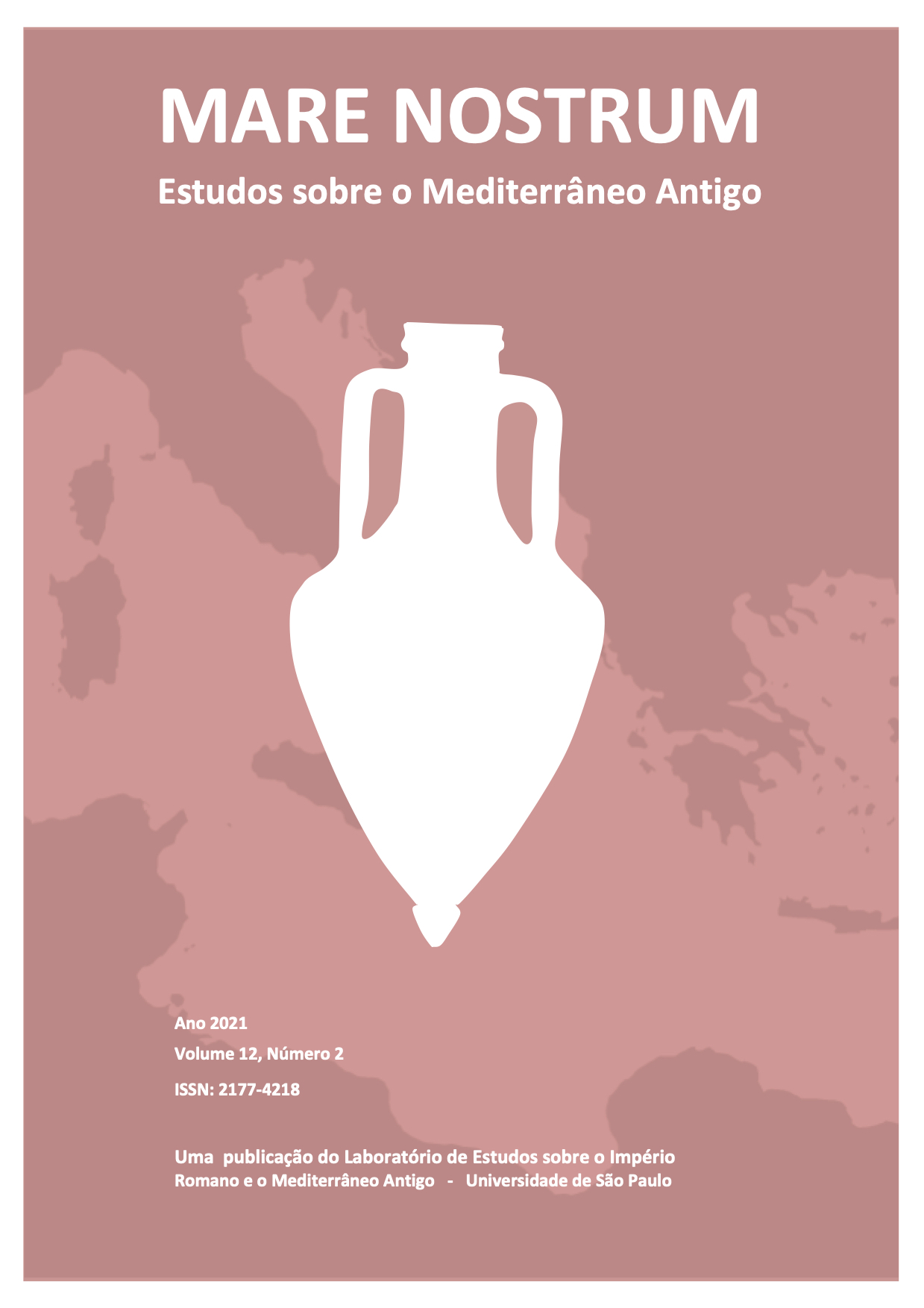Editorial
DOI:
https://doi.org/10.11606/issn.2177-4218.v12i2pix-xviiPalavras-chave:
EditorialResumo
Editorial
Downloads
Referências
Braudel, F. (2016). O Mediterrâneo e o Mundo Mediterrâneo na Épocas de Filipe II (2 Vols.), Trad. G. C. Cardoso de Sousa. Sao Paulo: Edusp.
Braudel, Fernand. (1975). The Mediterranean and the Mediterranean World in the Age of Philip II, (Vols. I-II), Transl. Siân Reynolds. New York and Evanston: Harper & Row.
Broodbank, C. (2000). An Island Archaeology of the Early Cyclades Cambridge: Cambridge University Press.
Brun, P. (1996). Les archipels égéens dans l'Antiquité grecque (Ve - IIe siècles av. notre ère). Paris: Belles Lettres.
Cherry, J. (1981). Pattern and process in the earliest colonisation of the Mediterranean islands. In Proceedings of the Prehistoric Society, (47), 41–68.
Collar, A., F. Coward, T. Brughmans, and B. J. Mills. (2015). Networks in archaeology: Phenomena, abstraction, representation. Journal of Archaeological Method and Theory (22) 1, 1–32. doi:10.1007/s10816-014-92356
Costantakopoulou, C. (2010). The Dance of the Islands: Insularity, Networks, the Athenian Empire, and the Aegean World. Oxford: Oxford University Press.
Dawson, H. (2014). Mediterranean Voyages. The Archaeology of Island Colonisation and Abandonment. Walnut Creek: Leftcoast Press.
Dawson, H. (2015). Deciphering the elements: Cultural meanings of water in an island setting. Accordia Research Papers, (14), 13–26.
Dawson, H. (2019a). Network science and island archaeology: Advancing the debate. The Journal of Island and Coastal Archaeology. doi: 10.1080/15564894.2019.1705439
Dawson, H. (2019b). As good asit gets? Optimal marginality in the longue durée of the Mediterranean islands. Journal of Eastern Mediterranean Archaeology, (7) 4, 451–465.
Dawson, H. (2019c). Island archaeology. In Encyclopedia of Global Archaeology, ed. C. Smith. New York: Springer Nature Switzerland AG, 1–8. doi:10.1007/978-3-319-51726-1
Dawson, H. (2021). At the heart of Mare Nostrum: Islands and “small world networks” in The Central Mediterranean Bronze Age. In Bridging Social and Geographical Space through Networks, eds. H. Dawson and F. Iacono. Leiden: Sidestone Press, 71-87.
Dawson, H. and Pugh, J. (2022). The lure of Islands: A cross-disciplinary conversation. In European Islands between Isolated and Interconnected Life Worlds, Ressourcen Kulturen 16, F, Schön, L. Dierksmeier, A. Kouremenos, A, Condit, and V. Palmowski, eds. Tübingen: University of Tübingen Press, 13-30.
Horden, Peregrine, and Nicholas Purcell. (2001). The Corrupting Sea. A Study of Mediterranean History. Oxford, Blackwell Publishers.
Knappett, Carl. (2013). Network Analysis in Archaeology. New Approaches to Regional Interaction. Oxford, Oxford University Press.
Kolodny, E. Y. (1974). La Population des iÎles de la Grèce: Essai de Géographie Insulaire en Méditerranée Orientale. Aix-en-Provence: Edisud.
Malkin, Irad. (2011). A Small Greek World. Networks in the Ancient Mediterranean. Oxford: Oxford University Press.
Malkin, Irad, Christy Constantakopoulou, and Katerina Panagopoulou (eds.). (2011). Greek and Roman Networks in the Mediterranean. London, Routledge.
Terrell, J. E. (1977). Human biogeography in the Solomon Islands. In Fieldiana Anthropology, (68) 1, 1–47.
Terrell, J. E. (1999). Comment on Paul Rainbird, “Islands out of time. Towards a critique of island archaeology.” In Journal of Mediterranean Archaeology, (12) 2, 240–245.
Terrell, J. E. (2018). Dynamic Network Analysis. 3. Connecting the Dots. https://sciencedialogues.com/articles/biological/elements-of-dynamic-network-analysis-3- connecting-the-dots/> (accessed 31 December, 2018).
Downloads
Publicado
Edição
Seção
Licença
Copyright (c) 2021 Lilian de Angelo Laky

Este trabalho está licenciado sob uma licença Creative Commons Attribution 4.0 International License.
Os conteúdos expressos nos textos publicados pela Mare Nostrum são de exclusiva responsabilidade de seus respectivos autores.
A reprodução dos textos editados pela Mare Nostrum é permitida sob licença Creative Commons, Atribuição-NãoComercial (CC BY-NC).
Autores que publicam nesta revista concordam com os seguintes termos:
- Autores mantém os direitos autorais e concedem à revista o direito de primeira publicação, com o trabalho simultaneamente licenciado sob a Licença Creative Commons Attribution que permite o compartilhamento do trabalho com reconhecimento da autoria e publicação inicial nesta revista.
- Autores têm autorização para assumir contratos adicionais separadamente, para distribuição não-exclusiva da versão do trabalho publicada nesta revista (ex.: publicar em repositório institucional ou como capítulo de livro), com reconhecimento de autoria e publicação inicial nesta revista.
- Autores têm permissão e são estimulados a publicar e distribuir seu trabalho online (ex.: em repositórios institucionais ou na sua página pessoal) a qualquer ponto antes ou durante o processo editorial, já que isso pode gerar alterações produtivas, bem como aumentar o impacto e a citação do trabalho publicado (Veja O Efeito do Acesso Livre).









